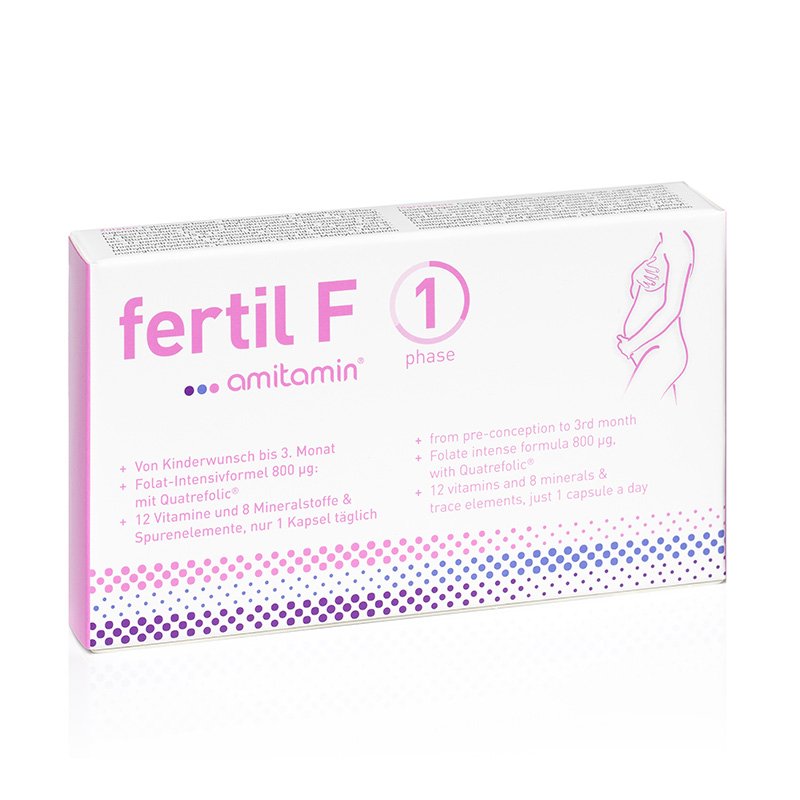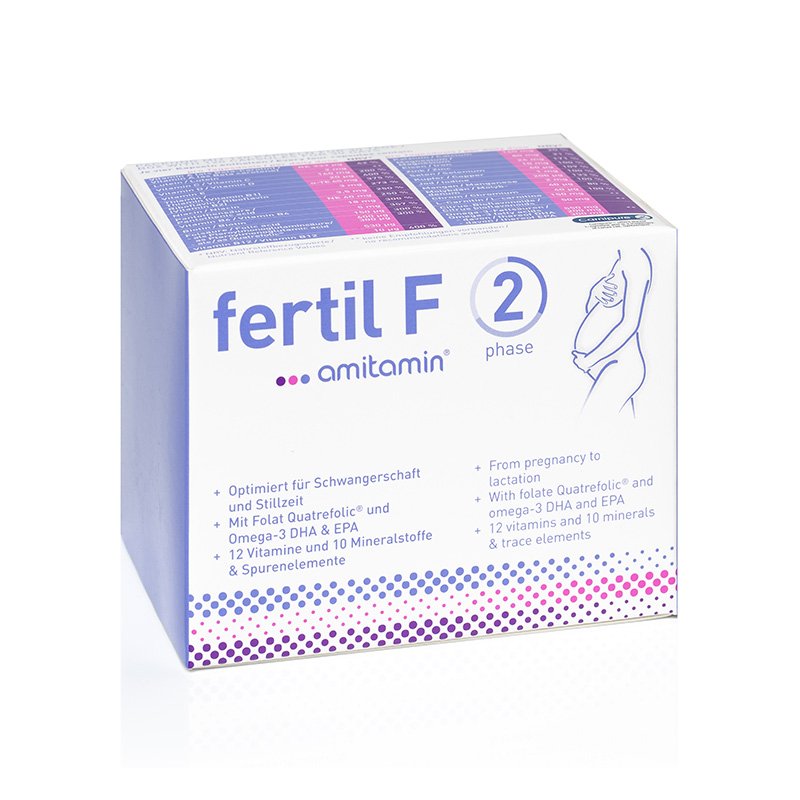Every year, up to 800 children in Germany are born with an open back.
A particularly important factor for the risk of these so-called neural tube defects (e.g. spina bifida) is folic acid deficiency or a low folate level in the blood.
Folic acid for pregnancy
Folic acid is essential for cell division and therefore for the healthy development of the child.
The need for folate is particularly high at the beginning of a pregnancy.
The German Society for Nutrition (DGE) recommends that women who want to become pregnant and women who are breastfeeding should consume 450-550 μg of synthetic folic acid per day in addition to a diet rich in folic acid with fresh fruit, vegetables and wholegrain products.
How much folate before pregnancy?
However, many gynecologists go beyond this recommendation and advise women to take up to 800 μg of folic acid daily.
This is because an increased intake can build up a good folate level in the blood quickly enough.
The benefits of 800 μg folic acid are confirmed by a study involving over 6,100 women.
No neural tube defects occurred in the study participants who took 800 μg of folic acid.
The additional intake of a folic acid supplement should be started at least four weeks before pregnancy and continued for at least the first trimester of pregnancy.
It is usually too late to start taking folic acid after the start of pregnancy to effectively prevent neural tube defects. This is because the spinal cord is already developing in the very first weeks of pregnancy.
The pregnant woman is usually not yet aware of her pregnancy.
Foods high in folic acid
| Food | Folic acid content |
|---|---|
| Spinach | up to 145 µg per 100g |
| Kale | up to 190 µg per 100g |
| Lamb’s lettuce | up to 145 µg per 100g |
| Broccoli | up to 111 µg per 100g |
| Leek | up to 100 µg per 100g |
| Brussels sprouts | up to 100 µg per 100g |
| Paprika | up to 60 µg per 100g |
| Kale | up to 190 µg per 100g |
| Peas | up to 159 µg per 100g |
| Chickpeas | up to 340 µg per 100g |
| Soybeans | up to 250 µg per 100g |
| Lenses | up to 170 µg per 100g |
| Peanuts | up to 170 µg per 100g |
| Strawberries | up to 43 µg per 100g |
| Sour cherries | up to 100 µg per 100g |
| Grapes | up to 40 µg per 100g |
| Mango | up to 40 µg per 100g |
| Quinoa | up to 184 µg per 100g |
| Wheat germ | up to 520 µg per 100g |
| Wholemeal bread | up to 40 µg per 100g |
| Camenbert | up to 65 µg per 100g |
| Liver | up to 670 µg per 100g |
Dietary supplement for pregnancy – with bioactive folate
With amitamin® fertil F phase 1 and fertil F phase 2, there is a very good way for women who want to have children and who are pregnant or breastfeeding to ensure a good folate level and an all-round supply of vitamins and trace elements for pregnancy.
Which of the two should you take?
It depends.
Here is a comparison of fertil F phase 1 and phase 2.
Have you already been recommended a different product? Compare e.g. Elevit®, femibion® and Orthomol Natal® with amitamin® before you decide!
Food supplement with bioactive folate and not just folic acid
Synthetic folic acid, which is processed in most food supplements, has a decisive disadvantage: a not inconsiderable proportion (8% – 25% of women, depending on the study) cannot convert folic acid into folate due to an otherwise unremarkable genetic defect.
Normal folic acid from food supplements is then simply useless. amitamin® fertil F phase 1 and phase 2, however, contain bioactive folate Quatrefolic®.
It does not have to be converted before it is available to the body.
This means that even women who cannot process folic acid can be sure of a healthy folate level.
This is because Quatrefolic® in amitamin® fertil F already contains bioavailable folate.
This post is also available in: French German Italian Spanish Portuguese (Portugal) Dutch Swedish Arabic Turkish Bosnian
















